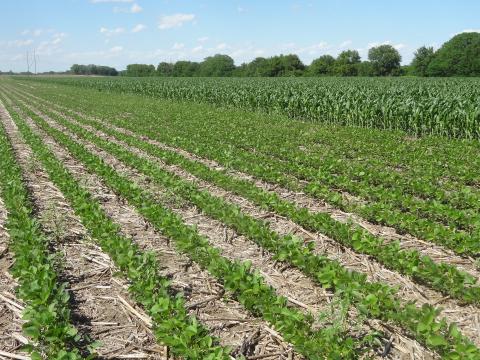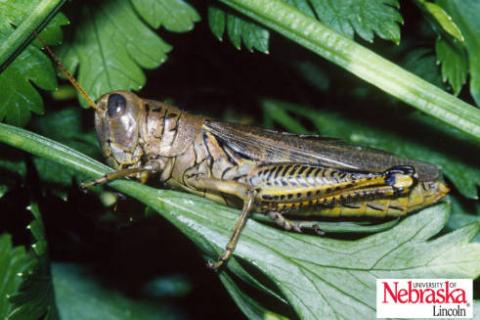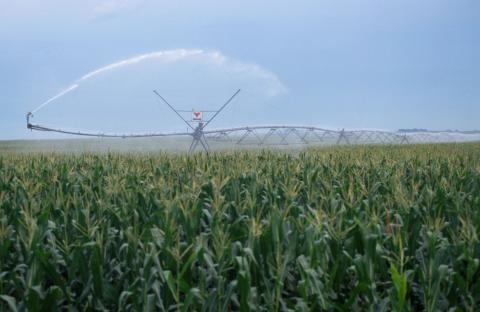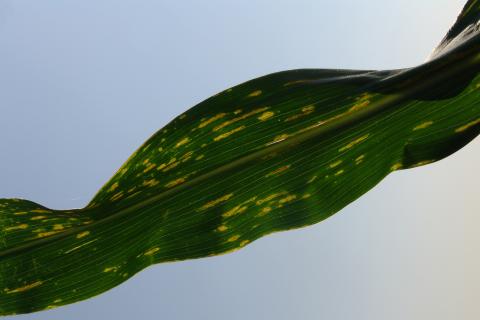USDA-NASS: Corn 74% Good-Excellent, Soybean, 70%, Wheat, 48%
June 26, 2017
Dry conditions across much of Nebraska allowed wheat harvest to begin, according to the report from the USDA National Agricultural Statistics Service for the week ending June 25.
Topsoil moisture supplies rated 14% very short, 42% short, 44% adequate, and 0% surplus. Subsoil moisture supplies rated 7% very short, 33% short, 60% adequate, and 0% surplus.
They're Back ... Time to Scout Field Borders for Grasshoppers
June 22, 2017
Populations of immature grasshoppers have been reported in areas bordering crop fields. If you're seeing one of the four species that harm cropland noted here, control may be warranted. Treatment is most effective when grasshoppers are small and still contained in field borders.
How Fast Do Corn Roots Grow? ISU is Taking a Look
June 22, 2017
Have you ever wondered how fast corn roots grow? Colleagues at Iowa State University have a number: more than 2 ¾ inches per leaf stage. That's about one inch per day! Soil cores were taken in the row and in the center between two rows. They used the cores to identify the presence of roots (depth and lateral growth).
Adult Emergence of Suspected Wheat Stem Maggot from Infested Corn Plants
June 22, 2017
University researchers are studying why suspected wheat stem sawflies are being found again this year in Nebraska corn, previously thought to be a non-host. Major yield loss is not expected in corn from this pest.
Nebraska Crop Conditions (NASS, 6/19/17)
June 19, 2017
Nebraska corn condition rated 78% good to excellent, soybean rated 72% good to excellent, and wheat rated 51% good to excellent, according to the June 18 report from USDA NASS.
How Much Irrigation is Needed on Corn in the Vegetative Growth Stage?
June 16, 2017
Strategies to time crop irrigation for maximum effectiveness suggest delaying irrigation until the critical reproductive growth stages will most benefit yield. This will also help reduce the potential for nitrate leaching.
Using Degree-Day Models to Predict Western Bean Cutworm Flights
June 15, 2017
Learn how degree-days are calculated and used to predict insect development and specifically, what they indicate for the timing of western bean cutworm development in Nebraska this year.
Bacterial Leaf Streak Confirmed on V4 Corn in Nebraska
June 15, 2017
Bacterial leaf streak disease has been confirmed on a sample submitted to the UNL Plant and Pest Diagnostic Clinic from Adams County. The corn was at the V4 growth stage and represents the earliest that the disease has been confirmed in a field.






